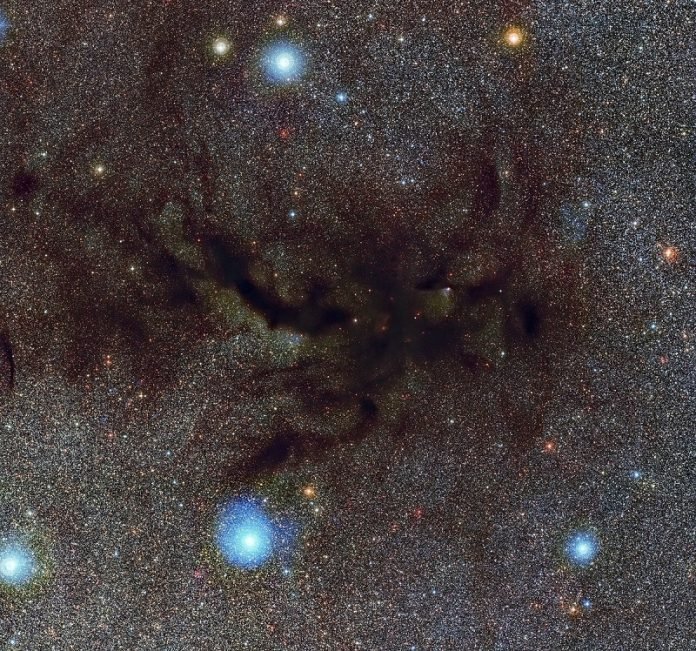
Most stars in the universe come in the form of pairs – binaries – or even multiple star systems.
Now, the formation of such a binary star system has been observed for the first time with high-resolution ALMA (Atacama Large Millimetre/submillimetre Array) images.
An international team of astronomers led by the Max Planck Institute for Extraterrestrial Physics targeted the system [BHB2007] 11, the youngest member of a small cluster of young stellar objects in the Barnard 59 core in the Pipe nebula molecular cloud.
While previous observations showed an accretion envelope surrounding a circum-binary disk, the new observations now also reveal its inner structure.
“We see two compact sources, that we interpret as circum-stellar disks around the two young stars,” explains Felipe Alves from MPE, who led the study.
“The size of each of these disks is similar to the asteroid belt in our Solar System, and their mutual distance is about 28 times the distance between the Earth and the Sun.”
Both proto-stars are surrounded by a circum-binary disk with a total mass of about 80 Jupiter masses, which shows a complex network of dust structures distributed in spiral shapes. The shape of the filaments suggest streamers of in-falling material, which is confirmed by the observation of molecular emission lines.
“This is a really important result,” stresses Paola Caselli, director and MPE and head of the Centre of Astrochemical Studies.
“We have finally imaged the complex structure of young binary stars, with their “feeding filaments” connecting them to the circum-binary disk. This provides important constraints for current models of star formation.”
The astronomers interpret the filaments as inflow streamers from the extended circum-binary disk, where the circum-stellar disk around the less massive of the two proto-stars receives more input, consistent with theoretical predictions.
The estimated accretion rate is only about 0.01 Jupiter masses per year, which agrees with rates estimated for other proto-stellar systems.
In a similar way, as the circum-binary disk feeds the circum-stellar disks, each circum-stellar disk feeds the proto-star in its centre.
At the disk-star level though, the accretion rate inferred from the observations is higher for the more massive object. The observation of emission from an extended radio jet for the northern object confirms this result, which is an independent indication that this proto-star is indeed accreting more material.
“We expect this two-level accretion process to drive the dynamics of the binary system during its mass accretion phase,” states Alves.
“While the good agreement of these observations with theory is already very promising, we will need to study more young binary systems in detail to further constrain the conditions that lead to stellar multiplicity.”



